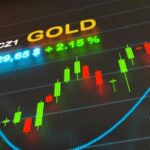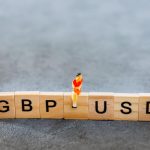Japanese yen fell to a two-month low versus the US dollar on uncertainty about the BoJ’s rate hike.
The Japanese yen (JPY) rises somewhat against the US dollar, having hit its lowest level since early August earlier on Thursday, bringing the USDJPY pair to 149.00 during the European session. The official data issued today indicated that the Producer Price Index (PPI) in Japan stayed steady in September, although the yearly rate grew higher. More than expected during the stated month. This, in turn, viewed as providing some support for the JPY.
Some repositioning action ahead of the US CPI release spurs profit-taking in the USDJPY pair.
The US Dollar (USD), on the other hand, consolidates its recent strong advances to an eight-week high as traders await the publication of the latest US consumer inflation data. This, in turn, leads traders to reduce their bullish wagers on the USDJPY pair. However, the ambiguity surrounding the Bank of Japan’s (BoJ) rate rise prospects, combined with the risk-on mentality, may restrict the JPY and limit losses in the currency pair ahead of Japan’s snap election on October 27.
Daily Market Movers: Japanese Yen bulls are uncommitted ahead of the US CPI release.
Data published on Tuesday revealed that Japan’s real salaries August saw a drop after two months of advances and a drop in household expenditure, casting doubt on the sustainability of private consumption and a sustainable economic recovery.
This follows Japan’s Prime Minister Shigeru Ishiba’s harsh comments on monetary policy, and it adds to doubt about the Bank of Japan’s rate hike prospects, which weighed on the Japanese yen and pushed the USDJPY pair higher.
According to a Bank of Japan study released on Thursday, Japan’s Producer Price Index (PPI) remained constant in September, against expectations of a 0.3% fall, while the annual rate unexpectedly increased from 2.6% in August to 2.8%.
In a quarterly survey issued this Thursday, the Japanese central bank indicated that 85.6% of Japanese families expect prices to rise within a year. from now, compared to 87.5% in the prior survey, providing some support for the Japanese yen.
US dollar rose to its highest level since August 16 following Wednesday’s hawkish FOMC minutes.
The US dollar rose to its highest level since August 16 following Wednesday’s hawkish FOMC minutes, which revealed that some policymakers would have preferred merely a 25 basis point rate cut amid relatively strong inflation.
Furthermore, there widespread agreement that the large rate decrease would not bind the Federal Reserve to any precise pace of future interest rate cuts and should not be seen as an indication of a more pessimistic economic outlook.
Dallas Fed President Lorie Logan said on Wednesday that she advocated lesser reductions going ahead since there still considerable upside risks to inflation and pointed to significant uncertainties surrounding The economic prognosis.
Separately, Boston Fed President Susan Collins emphasized that policy is not predetermined and would continue to be data-dependent, adding that it is critical to maintain the current strong labor market conditions.
Furthermore, San Francisco Fed President Mary Daly stated that the scale of the September rate drop has little bearing on the size of the upcoming cuts, and that one or two more rate cuts this year are likely if the economy evolves as she anticipates.
According to the CME Group’s FedWatch Tool, market participants now expect the Fed to cut borrowing costs by 25 basis points in November, with more than a 20% possibility that interest rates would remain unchanged. .
The yield on the rate-sensitive two-year US government bond surged to its highest level since August 19, while the benchmark 10-year Treasury yield increased for the sixth consecutive day on Wednesday, reaching its highest level since July 31.
Investors now anticipate the US Consumer Price Index (CPI), due later today, which, coupled with the US Producer Price Index on Friday, may affect market expectations regarding the Fed’s rate-cut path and move the USD/JPY pair.









